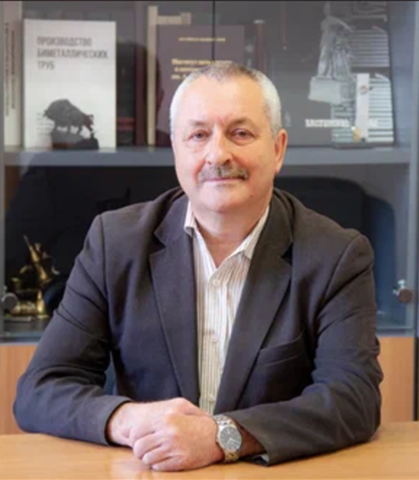Head of the Department of Machines and Processes of Pressure Metal Working, Doctor of Sciences (Engineering), Professor Aleksandr Vydrin, as part of the “Development of Digital Twins of Cold Pressure Processing of Composite Materials” technical assignment for the Intelligent Manufacturing project, together with his team, developed a technology of improving the reliability of the welding process. The technology will help to significantly increase the productivity of the welding process in any conditions.
Welding processes are widely used in manufacturing, in particular, in the production of pipes. Large-diameter pipes, which are an integral part of main gas pipelines, are distinguished by certain manufacturing specifics. A large-diameter pipe (1420 mm) is formed from a plate, after which its edges are welded.
“We are working on an effective tool that will ensure high-quality welding with the so-called flux-cored wire. A conventional electrode (the one that is used by welders when they weld pipes) is a metal rod with a flux applied to the surface. However, electrodes that are tubular profiles with flux powder or alloying elements poured inside are more effective,” Aleksandr Vydrin explained the specifics of the development.
The electrode diameter is traditionally 4 mm, and a special welding powder must be placed inside it. And if it is a ready-made tube, then it is impossible to pour powder into it. Therefore, the traditional method of producing powder welding wire is organised as follows: a tube is formed from a metal plate, powder is poured into it before welding its edges, and everything is welded along the edge. The length of such an electrode should be tens, if not hundreds, of meters. Therefore, the resulting wire is furled into a roll. In this case, the welded longitudinal seam works on bending. Accordingly, the strength of such a wire is low, which can lead to a rupture of the longitudinal weld and powder spillage.
High rate of emergency situations at production is associated with this feature. This is due to the fact that the seam, after numerous bendings into a roll and unbendings, simply bursts and the further welding process stops. An electrode made from a seamless pipe does not have this drawback.
A seamless pipe is quite possible to manufacture; however, it should be of a larger diameter. According to calculations by specialists from the Department of Machines and Processes of Pressure Metal Working, its diameter should be about 30 mm. And it is already quite possible to pour powder into a tube of such a diameter.
“Our task was to obtain thin tubes from a pipe with a diameter of at least 30 mm by drawing together with a powder core. This is what we have achieved, including with the help of the created digital twin of the composite material drawing process. This can be considered our main achievement in the project,” emphasized Aleksandr Vydrin.
New properties of the electrode achieved this way will allow:
-
to increase the reliability of the pipe welding process in workshop conditions; and
-
the new type of wire will make it possible to use automatic welding on site.
“Pipes, in general, have a limited length: up to 12 meters. And gas pipelines should be pulled for hundreds of kilometres. Therefore, long structures are traditionally welded from these pipes in the field, one pipe is welded to another. And powder wire with a shell made of a welded tube cannot be used in this case since it breaks when unwinding,” explained Aleksandr. “Today, welders continue to weld these pipes manually, often in the conditions of the taiga and the far north. Our new technical solution, a flux-cored wire with a seamless pipe sheath, which we are currently working on, will allow to use automatic welding in extreme field conditions.”
Labour productivity can increase several times accordingly. There will no longer be a need to use human physical labour in unfavourable conditions. At the same time, the reliability of the weld will be higher!
Currently, the new-type electrodes for such automatic welding are most needed in the northern regions of our country. This is where main gas pipelines are currently being laid, and it is difficult to use manual labour there.
If we master the production of such flux-cored wire, we will achieve significant benefits for everyone!”
The project is being implemented at SUSU within the frameworks of the Priority 2030 program under the Science and Universities national project.




